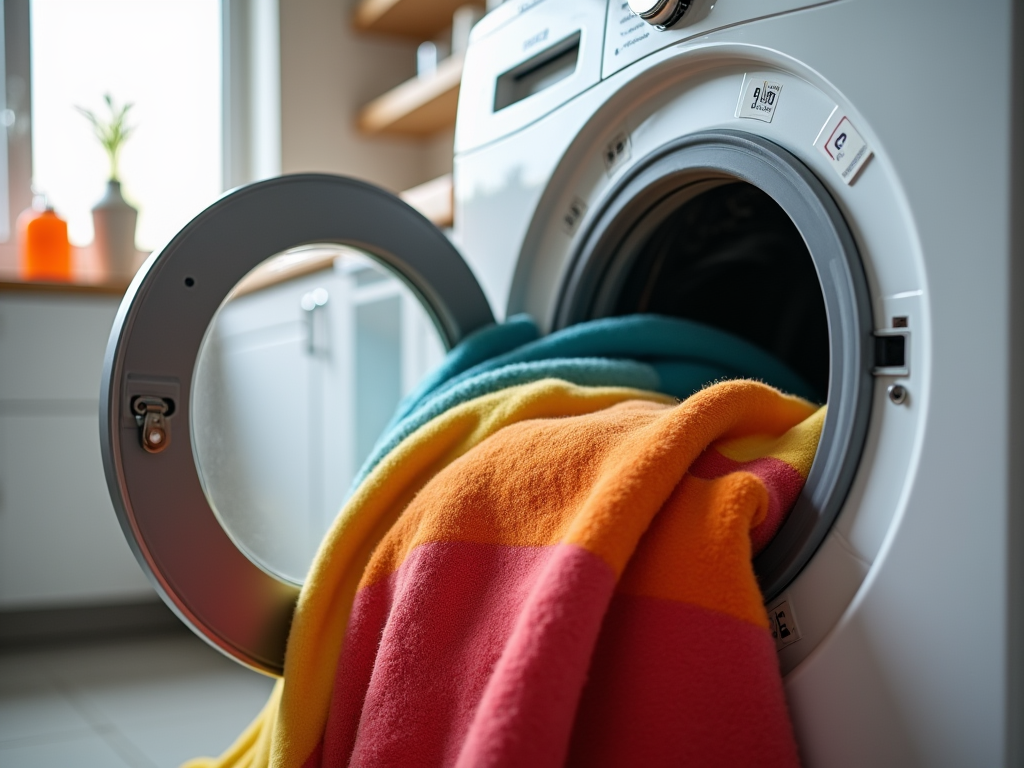Blankets are more than just items of warmth; they hold memories, provide comfort, and enhance our relaxation. Imagine wrapping yourself in a freshly cleaned blanket at the end of a long day—there’s nothing quite like it. However, without proper maintenance, blankets can accumulate dust, allergens, and unpleasant odors. The key to prolonging their life and ensuring comfort lies in understanding how to clean them correctly. In this guide, you will discover tailored strategies for different types of blankets, ensuring they remain plush and inviting. Adventure awaits as we delve into the nuances of blanket care, offering you the best practices for keeping your beloved bedding in top condition.
Types of Blankets

Knowing the various types of blankets can significantly influence your cleaning choice. Each type comes with unique characteristics, which determine how they should be cleansed. For instance, wool blankets are not only warm but also require gentle handling due to their fibers. Cotton offers more durability, while fleece presents a cozy warmth that’s often machine washable. Synthetic blankets bring convenience, but knowing the right cleaning technique is essential to maintain their texture. Let’s take a closer look at the common types of blankets you’ll encounter.
- Wool Blankets: Warm and breathable, but require careful washing.
- Cotton Blankets: Versatile and durable, easy to clean.
- Fleece Blankets: Soft and lightweight, typically machine washable.
- Synthetic Blankets: Diverse and easy to care for.
Preparing to Clean Your Blankets

Preparation is key to successful blanket cleaning. Before you start, it’s vital to gather the necessary supplies. A well-stocked cleaning station can make a significant difference in the efficiency of the process. You wouldn’t want to stop mid-way to find that you’re missing an essential item. Before proceeding, one must also check care labels found on the blankets. These labels provide valuable information regarding washing temperatures and drying methods, ensuring you don’t mistakenly damage your blanket. Start by assembling everything you’ll need to tackle the cleaning process effectively.
| Supply | Purpose |
|---|---|
| Laundry Detergent | Used for cleaning dirt and stains |
| Fabric Softener | Makes blankets feel softer |
| Stain Remover | Targets and removes tough stains |
| Drying Rack | Allows air drying without distortion |
Cleaning Blankets in a Washing Machine
For many, the washing machine presents the easiest option for cleaning blankets. Most modern machines have cycles designed specifically for delicate fabrics, making them ideal for this task. When machine washing, ensure you sort blankets by color to avoid any potential bleeding. Additionally, it’s crucial not to overload your machine to allow for effective cleaning. Selecting appropriate settings is just as important—using cold water and a gentle cycle can help maintain your blankets’ integrity. By following these guidelines, you can achieve a thorough cleaning without damaging your favorite items.
Hand Washing Blankets
Some blankets require a bit more TLC—hand washing. This method is particularly beneficial for delicate fabrics that may not tolerate the rigors of machine washing. You can start by filling a bathtub or basin with lukewarm water and adding mild detergent. Gently submerge the blanket, taking care to scrub any soiled areas carefully. Avoid wringing the fabric, as this can distort the shape and feel of the blanket. Rinse thoroughly with clean water to remove all soap residue before laying it out to dry. Hand washing can preserve the quality of your more delicate textiles while still achieving remarkable cleanliness.
Drying Your Blankets
Once your blankets have been washed, the drying process must also be handled with care. Improper drying can lead to shrinkage or changes in texture, which you definitely want to avoid. You may choose between two main methods: air drying and using a dryer. Air drying is ideal for maintaining the shape and feel of blankets; simply hang them on a drying rack in a well-ventilated area. Conversely, if the care label permits, using a dryer on a low heat setting can be a time-saver. However, always keep an eye on the process as some fabrics may still be sensitive to heat. Following these drying methods will ensure your blankets remain cozy and soft.
Conclusion
Cleaning and maintaining your blankets enhances their longevity and contributes to a more pleasant sleeping environment. By understanding the specific material of each blanket and adhering to proper cleaning methods, you can keep them looking pristine and feeling snuggly. Whether you choose to machine wash or hand wash, the effort invested in cleaning your blankets is worth it. With proper care, your blankets will be ready to provide warmth and comfort for many seasons to come. So, take a moment to assess your blanket collection and start your cleaning journey today—you’ll thank yourself each time you wrap up in a freshly laundered blanket!
Frequently Asked Questions
- How often should I clean my blankets? It’s recommended to wash blankets every 1-2 months, or more frequently if they’re used daily.
- Can I use bleach on my blankets? Only use bleach if the care label states it is safe. Opt for color-safe bleach when necessary.
- What if my blanket has stains? Pre-treat stains with a stain remover before washing to ensure they come out.
- How do I prevent blankets from smelling? Make sure they are completely dry before storing and consider adding lavender sachets for a pleasant scent.
- Is it safe to wash blankets with other laundry? It depends on the type of blanket and the items you wash with it. Always check for colorfastness and compatibility.
